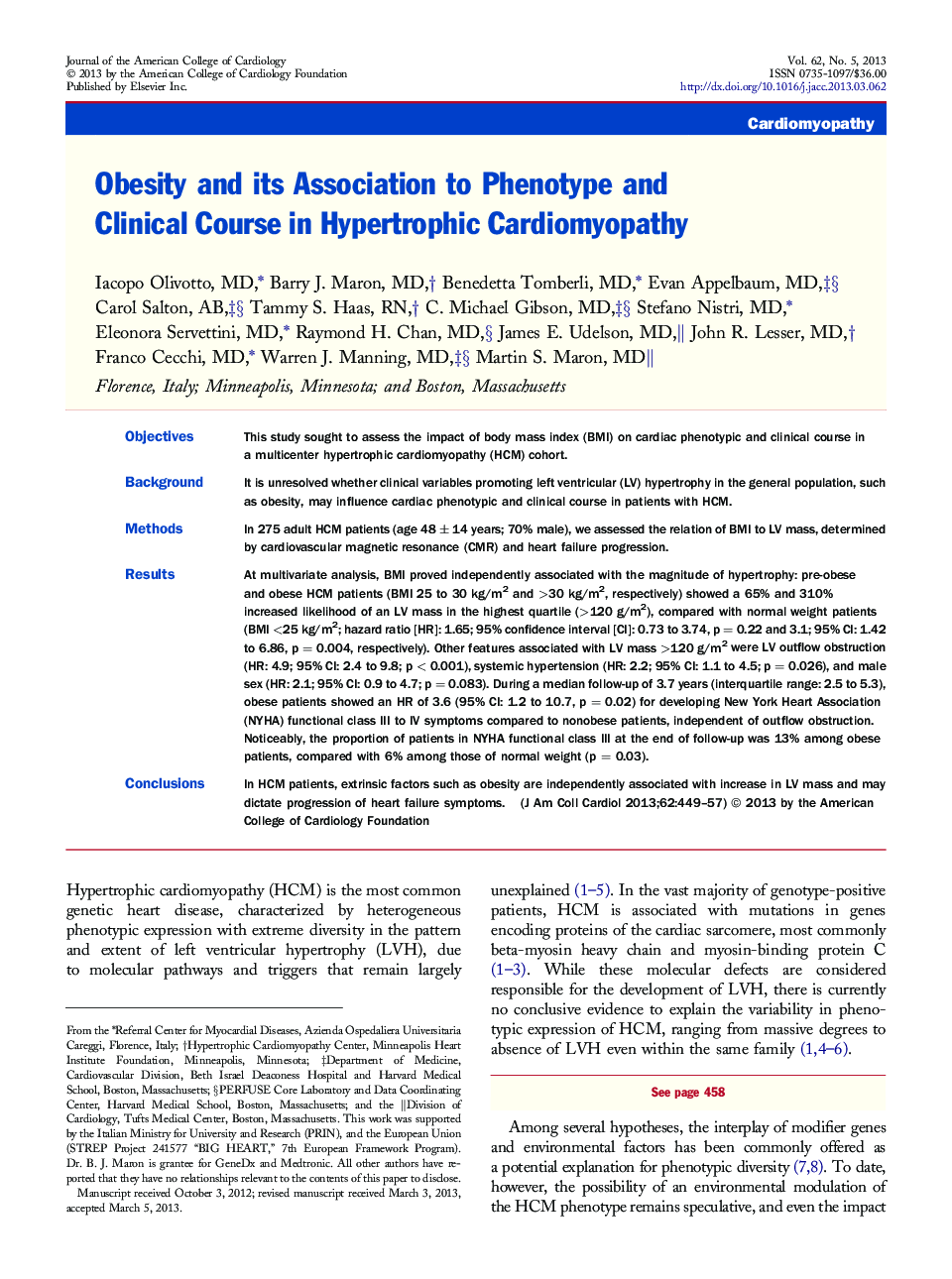| کد مقاله | کد نشریه | سال انتشار | مقاله انگلیسی | نسخه تمام متن |
|---|---|---|---|---|
| 2945904 | 1577148 | 2013 | 9 صفحه PDF | دانلود رایگان |

ObjectivesThis study sought to assess the impact of body mass index (BMI) on cardiac phenotypic and clinical course in a multicenter hypertrophic cardiomyopathy (HCM) cohort.BackgroundIt is unresolved whether clinical variables promoting left ventricular (LV) hypertrophy in the general population, such as obesity, may influence cardiac phenotypic and clinical course in patients with HCM.MethodsIn 275 adult HCM patients (age 48 ± 14 years; 70% male), we assessed the relation of BMI to LV mass, determined by cardiovascular magnetic resonance (CMR) and heart failure progression.ResultsAt multivariate analysis, BMI proved independently associated with the magnitude of hypertrophy: pre-obese and obese HCM patients (BMI 25 to 30 kg/m2 and >30 kg/m2, respectively) showed a 65% and 310% increased likelihood of an LV mass in the highest quartile (>120 g/m2), compared with normal weight patients (BMI <25 kg/m2; hazard ratio [HR]: 1.65; 95% confidence interval [CI]: 0.73 to 3.74, p = 0.22 and 3.1; 95% CI: 1.42 to 6.86, p = 0.004, respectively). Other features associated with LV mass >120 g/m2 were LV outflow obstruction (HR: 4.9; 95% CI: 2.4 to 9.8; p < 0.001), systemic hypertension (HR: 2.2; 95% CI: 1.1 to 4.5; p = 0.026), and male sex (HR: 2.1; 95% CI: 0.9 to 4.7; p = 0.083). During a median follow-up of 3.7 years (interquartile range: 2.5 to 5.3), obese patients showed an HR of 3.6 (95% CI: 1.2 to 10.7, p = 0.02) for developing New York Heart Association (NYHA) functional class III to IV symptoms compared to nonobese patients, independent of outflow obstruction. Noticeably, the proportion of patients in NYHA functional class III at the end of follow-up was 13% among obese patients, compared with 6% among those of normal weight (p = 0.03).ConclusionsIn HCM patients, extrinsic factors such as obesity are independently associated with increase in LV mass and may dictate progression of heart failure symptoms.
Journal: Journal of the American College of Cardiology - Volume 62, Issue 5, 30 July 2013, Pages 449–457